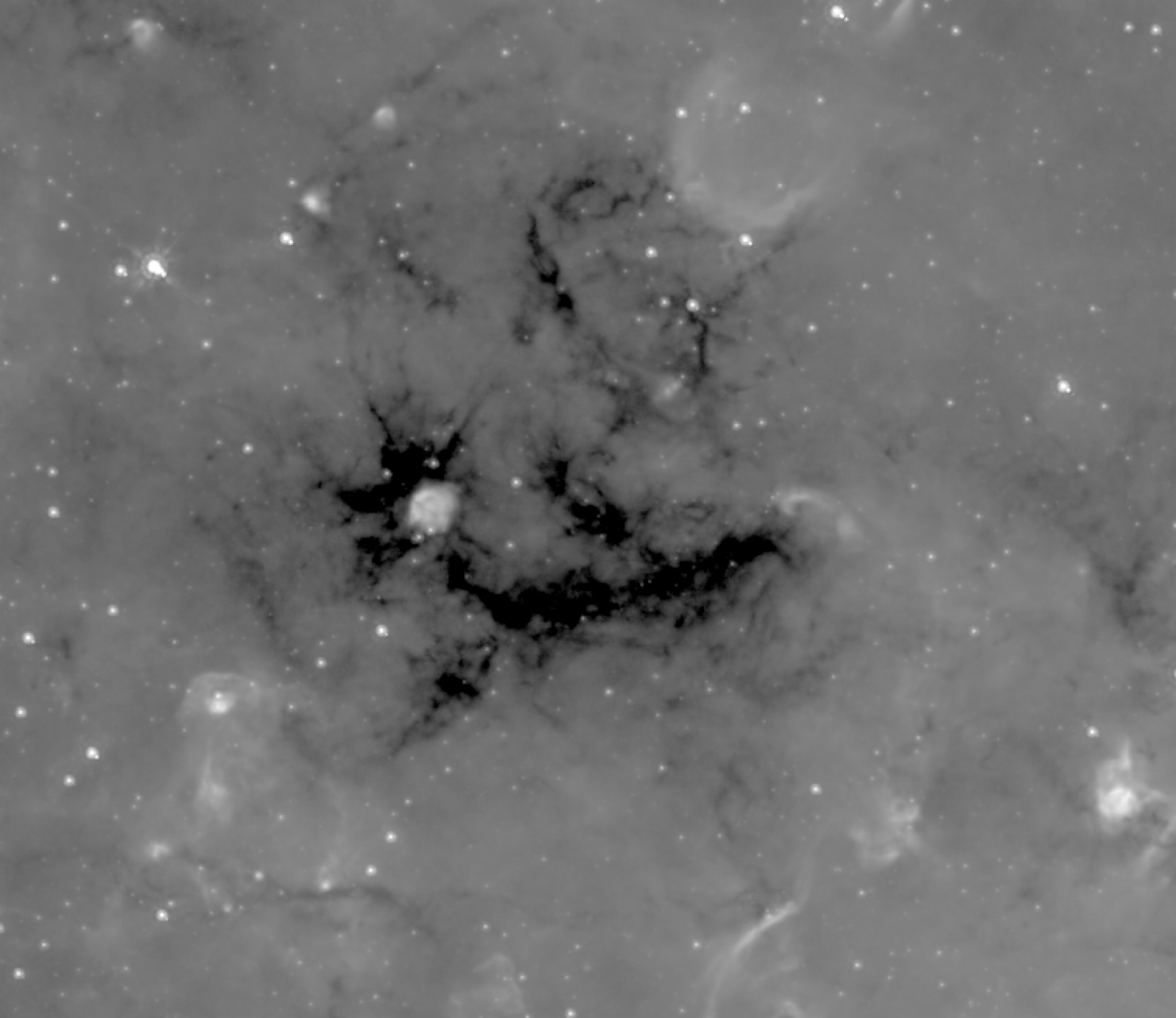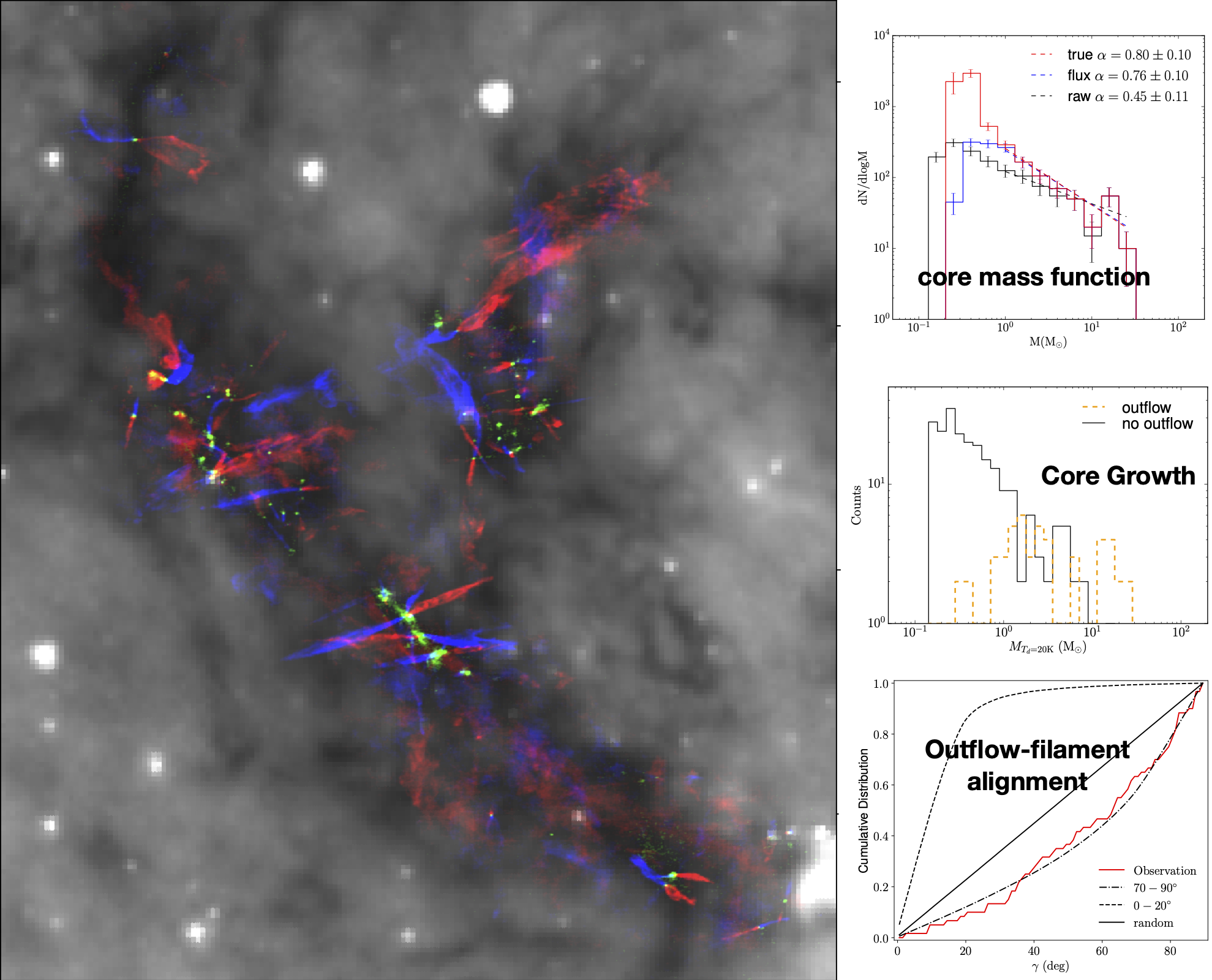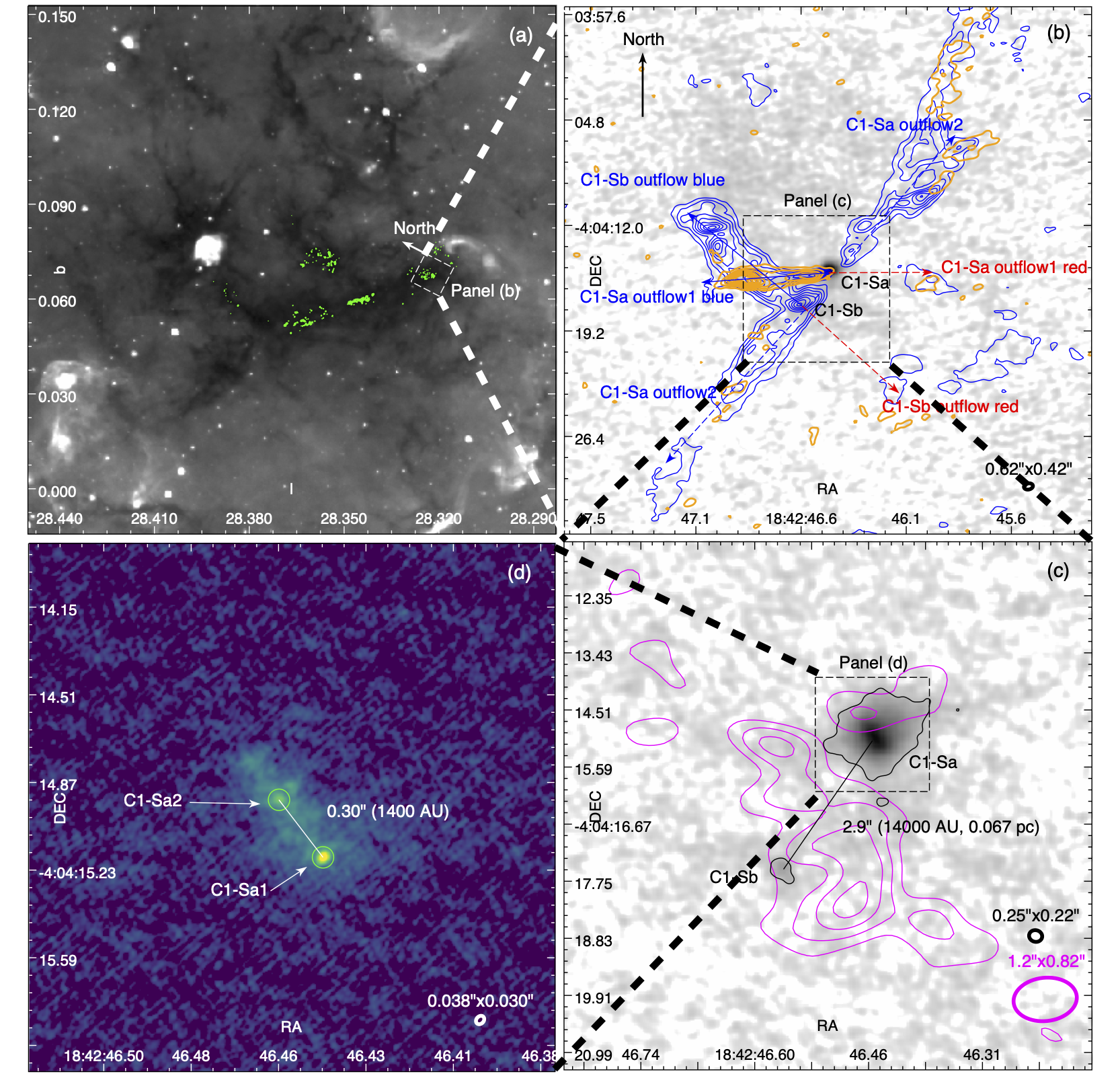Infrared Dark Clouds (IRDCs)
An IRDC is a dense, cold region of gas and dust in the
interstellar medium that appears dark against the
bright infrared background of the Milky Way.
These clouds are cold (typically around 10-20 K) and dense
(gas number densities ~105 cm-3 which is
much higher than the average interstellar medium), and
contain large amounts of dust that absorb and block background
infrared light, causing them to appear as dark silhouettes in
infrared images (e.g., from the Spitzer Space Telescope).

Millimeter wavelengths observations with interferometers:
I have been studying star formation in distant IRDCs using interferometers
at mm/sub-mm wavelengths. These wavelengths contain dust continuum emission
and molecular line emission that can penetrate the thick gas and dust
that obscure the cloud at shorter wavelengths.

Using the
Atacama Large Millimeter/submillimeter Array (ALMA),
I have mapped the IRDC G28 in the 1.3 mm dust continuum along
with multiple molecular line emissions. In the figure above,
the green color represents dust emission, which traces the
dense cores deeply embedded within the cloud. These cores are
localized regions of high density where individual stars or
multiple systems are formed. As shown, the dense cores align
well with the dark lane seen in the infrared emission.
This alignment reveals that although this IRDC appears quiescent,
it is actively forming a cluster of stars.
Star formation activity is further evidenced by CO molecular
outflows. In the figure, the blueshifted and redshifted
high-velocity CO gas forms bipolar outflows originating
from the dense cores, indicating ongoing accretion onto
central protostars. These protostars will continue accreting
material from their surroundings until they eventually expel
the remaining gas, unveiling themselves as a nascent star
cluster. The expelled gas will return to the interstellar
medium, feeding the next cycle of molecular cloud and star formation.
With the ALMA data, I studied the core mass distribution in G28,
showing a shallower core mass function (CMF) than the typical
stellar initial mass function (IMF). Similar results were seen in
other massive star-forming regions (e.g.,
the
ALMA-IMF Large Program). Either the CMF has little
effect on the final IMF, or additional physics is needed to
explain the slope change. The results were reported in
Kong (2019), ApJ, 873, 31.
By examining the outflows in G28, one can see that they are
roughly orthogonal to the filamentary dark lanes. To investigate
this further, I conducted a statistical analysis of the relative
orientation between the outflows and the filaments, which I presented in
Kong et al. (2019), ApJ, 874, 104.
The result shows that the relative orientation tends to be close to
90 degree, suggesting the presence of a large-scale physical mechanism
that maintains this alignment. Such a mechanism could be closely related to,
or even responsible for, the formation of the cloud itself.
Using the CO outflow data, one can distinguish between cores with and
without signs of star formation, at least to some extent. Assuming that
cores exhibiting outflows are more evolved than those without,
comparing the two types can reveal whether core mass increases over time.
In Kong et al. (2021), ApJ, 912, 156,
I conducted a statistical test of the core masses and found that
protostellar cores tend to be more massive than starless ones.
This result suggests that dense cores are not static in mass but
instead actively interact with their surroundings by continuing to accrete material.
